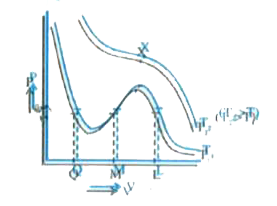Assertion:Van't Hoff factor for electrolytes is always greater than unity.
Reason: Electrolytes undergo dissociation in polar solvents like water.Solution in Telugu
Both Assertion and Reason are true and Reason is the correct explanation of Assertion
Both Assertion and Reason are true and Reason is not the correct explanation of Assertion
Assertion is true but Reason is false
Both Assertion and Reason are false
The correct Answer is:A
Step by step video, text & image solution for Assertion:Van't Hoff factor for electrolytes is always greater than unity. Reason: Electrolytes undergo dissociation in polar solvents like water. by Chemistry experts to help you in doubts & scoring excellent marks in Class 12 exams.
Topper's Solved these Questions
- BOOK - AAKASH SERIESCHAPTER - SOLUTIONS EXERCISE - Objective Exercise -3 (PREVIOUS NEEET/AIPMT )24videos
SOLUTIONS
- BOOK - AAKASH SERIESCHAPTER - SOLIDS STATEEXERCISE - PRACTICE EXERCISE63videos
SOLIDS STATE
- BOOK - AAKASH SERIESCHAPTER - STATES OF MATTER EXERCISE - ADDITIONAL PRACTICE EXERCISE -PRACTICE SHEET (ADVANCED) (LINKED COMPREHENSION TYPE QUESTIONS) (PASSAGE- IV)2videos
STATES OF MATTER
Similar Questions
A solution has a 1 : 4 mole ratio of pentane to hexane. The vapour pressures of pure hydrocarbons at 20∘C are 440 mm Hg for pentane and 120 mm Hg for hexane. The mole fraction of pentane in vapour phase woule be
04:40View SolutionWhich of the following is considered as true amorphous solid
01:59View SolutionAt a particular temperature and pressure for a real gas Van der Waal's equation can be written as:
(P+aV2m)(Vm−b)=RT

where Vm is molar volume of gas. This is cubic equation in the variable Vm and therefore for any single value of P & T there should be 3 values of Vm. Which are shown in graph as Q, M and L.
As temperature is made to increase at a certain higher temperature the three values of Vm becomes identical. The temperature, pressure & molar volume at point X are called Tc, Pc & Vc for real gas. The compressibility factor in terms of Pc, Vc and T is called Zc.
The expression of Van dcr Waal's constant 'a' can be given as01:48View SolutionFor electrolytic solution, the Van't Hoff factor (i) is always equals to unity.
01:27View SolutionStatement van't Hoff factor for electrolytes is always greater than unity.
Explanation The number of particles increases in solution due to electrolytic dissociation.02:22View SolutionThe degree of dissociation of an electrolyte is α and its van't Hoff factor is i. The number of ions obtained by complete dissociation of 1 molecules of the electrolyte is :
01:45View SolutionThe van't Hoff factor I for an electrolyte which undergoes dissociation and association in solvent place as follows
01:37View SolutionIn case of electrolyte which dissociates in the solution the van Hoff factor I
01:31View SolutionThe addition of a polar solvent to a solenoid electrolyte results in
03:20View SolutionIf van't Hoff factor is less than unity, this shows that the solute undergoes ……………..in the solution.
01:31View SolutionWhen an electrolyte is dissociated in solution, the van.t Hoffs factor (i) is ,
02:04View SolutionThe van't Hoff factor i for an electrolyte which undergoes dissociation in one solvent and association in other solvent respectively:
01:26View SolutionWhen an electrolyte is dissociated in solution, the van.t Hoffs factor (i) is ,
02:09View SolutionFor a non-electrolyte van’t Hoff factor is _______.
View SolutionA weak electrolyte like water dissociates completely into ions.
02:48View Solution

